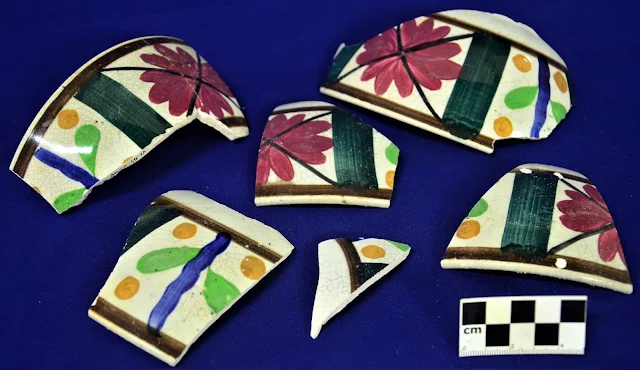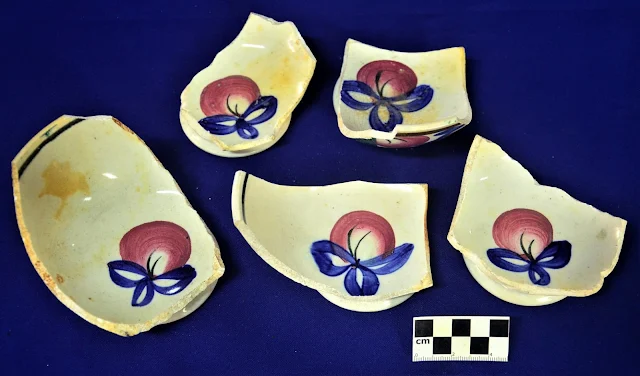Hand Painted Ceramics from the Arevalo Shoal Shipwreck [Maritime Archeology]
In 1970, an investigation into reports of shipwreck looting at Arevalo Shoal, located between Guimaras Island and Arevalo Beach in Iloilo City, led to the discovery of a sunken wooden vessel containing ceramics, bottles, and metal artifacts. More than a hundred whole and fragmented painted ceramic bowls were recovered in the Arevalo Shoal shipwreck site. These fine-paste earthenware are decorated with painted designs using sponges.
The pieces of sponge are cut into designed shapes and then pressed against the desired paint color before laying onto the exterior surfaces of the ceramics. Interestingly, the origin of these wares have not been ascertained at this point, although the closest would be the Llanelly ceramics produced in Llanelly, South Wales in the United Kingdom from 1839 until the 1920s.
The historical and archaeological evidence points to a late 19th century Common Era (CE) British steamship. The presence of coal that covered the shipwreck imply that the vessel was propelled by a combination of coal engine and sail. The onboard artifacts suggest these were utilitarian, and not cargo or commercial items. The vessel may have called at Iloilo port and loaded cargo such as sugar, tobacco, coffee and abaca that unfortunately did not survive the archaeological record.
After the cessation of the Manila Galleon trade in 1815, Spanish Manila’s monopoly of commercial trade declined that consequently caused the opening of other maritime ports to foreign merchants such as the British, Americans, and the Chinese among others.
Iloilo opened a maritime port in 1855 that supplied sugar and other agricultural products, resulting in the province’s prosperity starting in the middle 19th century. The Arevalo Shoal shipwreck may have been one of the many foreign ships that carried out trading activities with the Iloilo port.
Archaeological study is very important in supporting the accurate interpretation of past events, which helps in reconstructing our history. When a site is disturbed or pilfered, we lose information forever without the significant context to assist us in piecing together our story. This is much more valuable than the selfish individual’s monetary gain or enriching their collections.
Our heritage and recounting its narrative through material culture benefits future generations and our aspirations as a nation. If you see or have knowledge of sites being looted, report to your local government authorities immediately or contact the closest NMP office near you.
Poster, text, and photos by the Maritime and Underwater Cultural Heritage Division
© National Museum of the Philippines (2021)




![Hand Painted Ceramics from the Arevalo Shoal Shipwreck [Maritime Archeology] Hand Painted Ceramics from the Arevalo Shoal Shipwreck [Maritime Archeology]](https://blogger.googleusercontent.com/img/b/R29vZ2xl/AVvXsEjlpwu-lcZ5m7N44YVd_AhTI-u66sXff-EMcS6v_F8O-wVdVSjQNPRq_EEJF5ef3w4w25ze6ScgPjx99e8Fx8vOwd5_Hkv6o00VIh59AyMGGwfAHq6lecsnI32u8dRawIl5iQ05/w640-h226-rw/169268523_4171112812913005_480113807468837266_n.jpg)

No comments:
Got Something to Say? Thoughts? Additional Information?